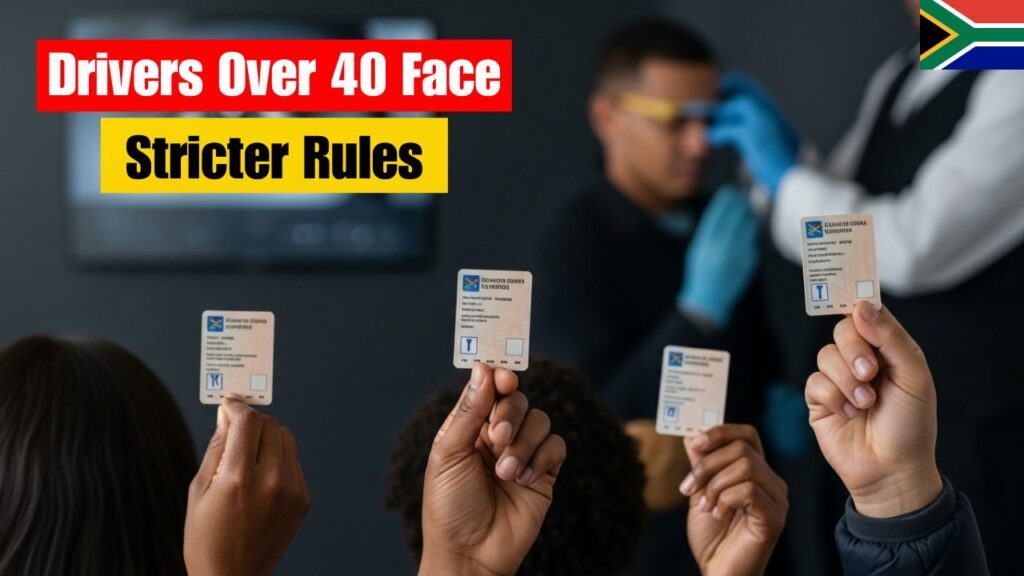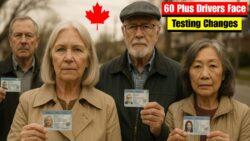Starting in November 2025 South Africa will introduce a new driver’s licence renewal system for people over forty years old. The Department of Transport has created new regulations about eye testing and medical fitness checks along with updated renewal timeframes. These changes aim to improve road safety as the country deals with more driving accidents linked to age-related health problems. This article explains the new regulations and what they mean for drivers while offering guidance on how to renew your licence without complications. The new system requires drivers over forty to undergo more thorough assessments before their licences can be renewed. These assessments focus on vision quality & overall medical condition to ensure that older drivers remain capable of operating vehicles safely.

New Age-Based Licence Rules for South Africans Over 40
According to the new legislation all drivers aged 40 and above must renew their driver’s licence every five years instead of the current ten years. The Department of Transport bases this decision on the need for regular health and vision checks that become increasingly important as people age. These drivers will need to provide a current eye test certificate from an optometrist or complete the test during the renewal process unless they are renewing at a Driving Licence Testing Centre. This plan brings South Africa in line with other countries that conduct regular tests for older drivers to ensure they maintain the necessary skills for safe driving.
Updated Vision Screening & Eye Test Criteria Explained
The transition to the new eye test standard represents a significant change. The RTMC (Road Traffic Management Corporation) now requires eye tests for all drivers over 40 years old. Only those who meet the necessary standards will be allowed to keep their licenses based on their test results.
– Vision Standards: Your eyesight must be at least 20/40 in both eyes when measured with or without corrective lenses.
– Peripheral Vision: Both eyes must have a minimum lateral field of view of at least 70 degrees.
– Night and Glare Sensitivity: Drivers must complete a glare recovery time test to determine their ability to drive safely at night. If an ophthalmologist determines that your vision does not meet the minimum requirements you will not be able to apply for a driver’s license. You must first obtain the recommended eyeglasses or contact lenses or complete the necessary treatment before applying.
Health Checks, Medical Fitness Forms & Extra Compliance Steps
Drivers who are forty years old or older may need to complete a short medical form about their vision when they renew their license. If a driver has diabetes or high blood pressure or epilepsy they must get a medical report from their doctor. This report must confirm that their health condition does not create a danger for safe driving before they can renew their license. Professional drivers such as taxi drivers or bus drivers or truck drivers must go through stricter evaluations. They are required to take regular physical examinations & hearing tests. These tests are safety requirements designed to help prevent accidents that result from driver fatigue or poor vision or delayed reaction times.
Step-By-Step Licence Renewal Process & Approved Renewal Centres
To renew your driver’s license you can visit your nearest DLTC center or use the online booking system through the RTMC’s NaTIS platform. You will need to bring several documents with you when you apply.
– These documents include a valid South African ID or an unexpired passport.
– You must also bring your current driver’s license card.
– If your address has changed within the last three months you should bring proof of your new residence.
– Anyone who completed their vision test outside the department needs to provide the certificate from that test.
– The renewal fee varies by province but typically costs between R250 & R300.
– You should submit your renewal application at least four weeks before your license expires.
This advance planning helps you avoid penalties and ensures you remain legally authorized to drive.
How These New Driving Rules Impact Safety and Compliance
According to the Department of Transport, accidents caused by poor eyesight or slow reaction time account for approximately 30% of fatalities among drivers aged 40 and older. Through this new regulation authorities have redirected their attention toward protecting road users and enabling early detection of age-related vision problems. They are helping to address this important issue. Regular eye and health checkups will not only improve road safety but also allow older drivers to maintain their independence & confidence behind the wheel.




